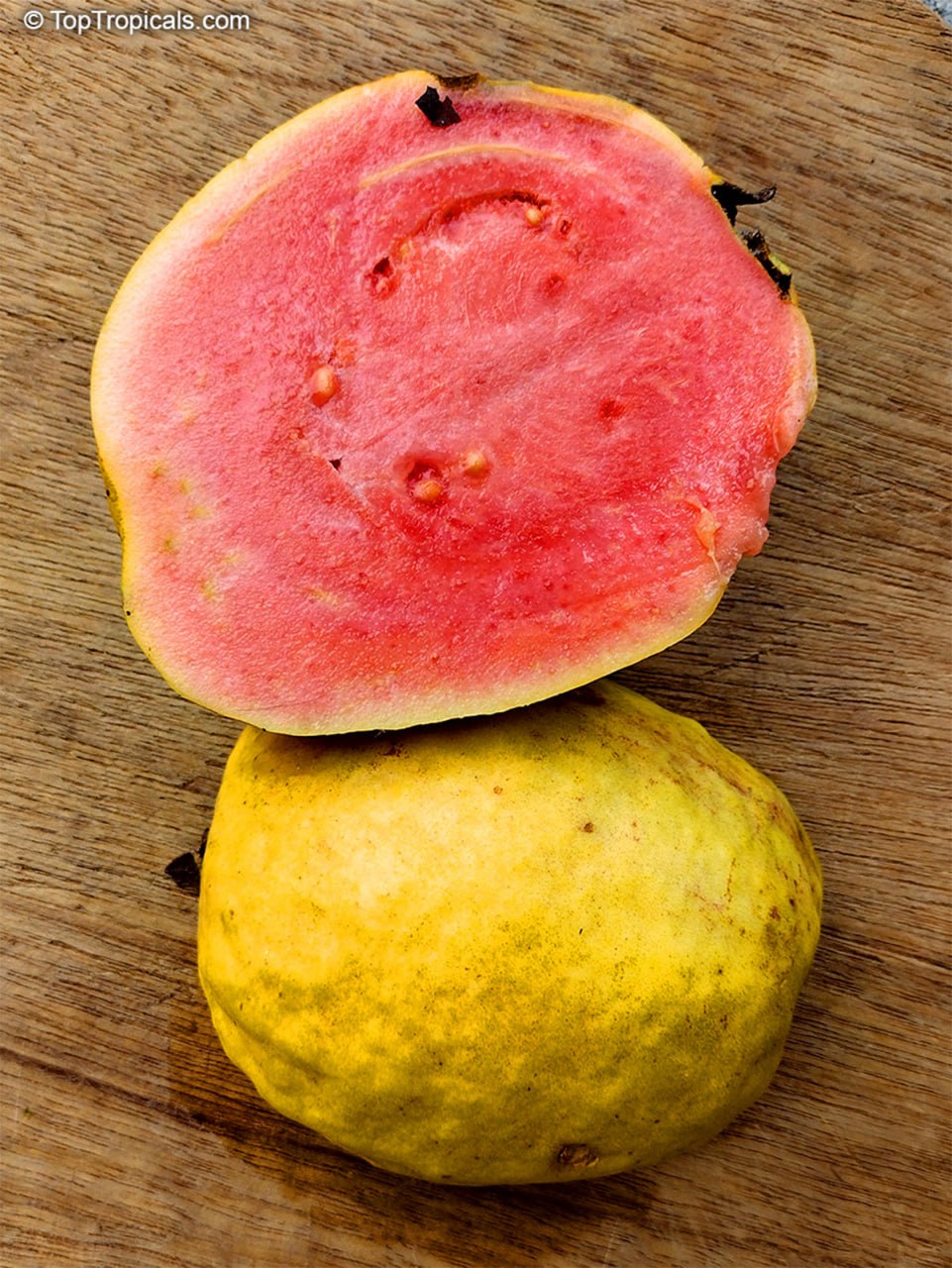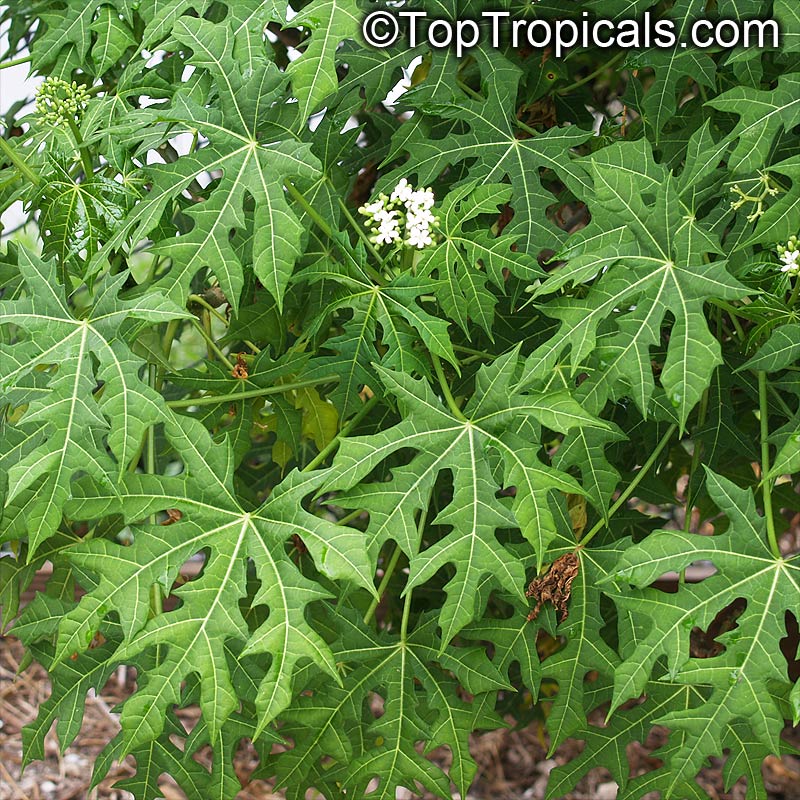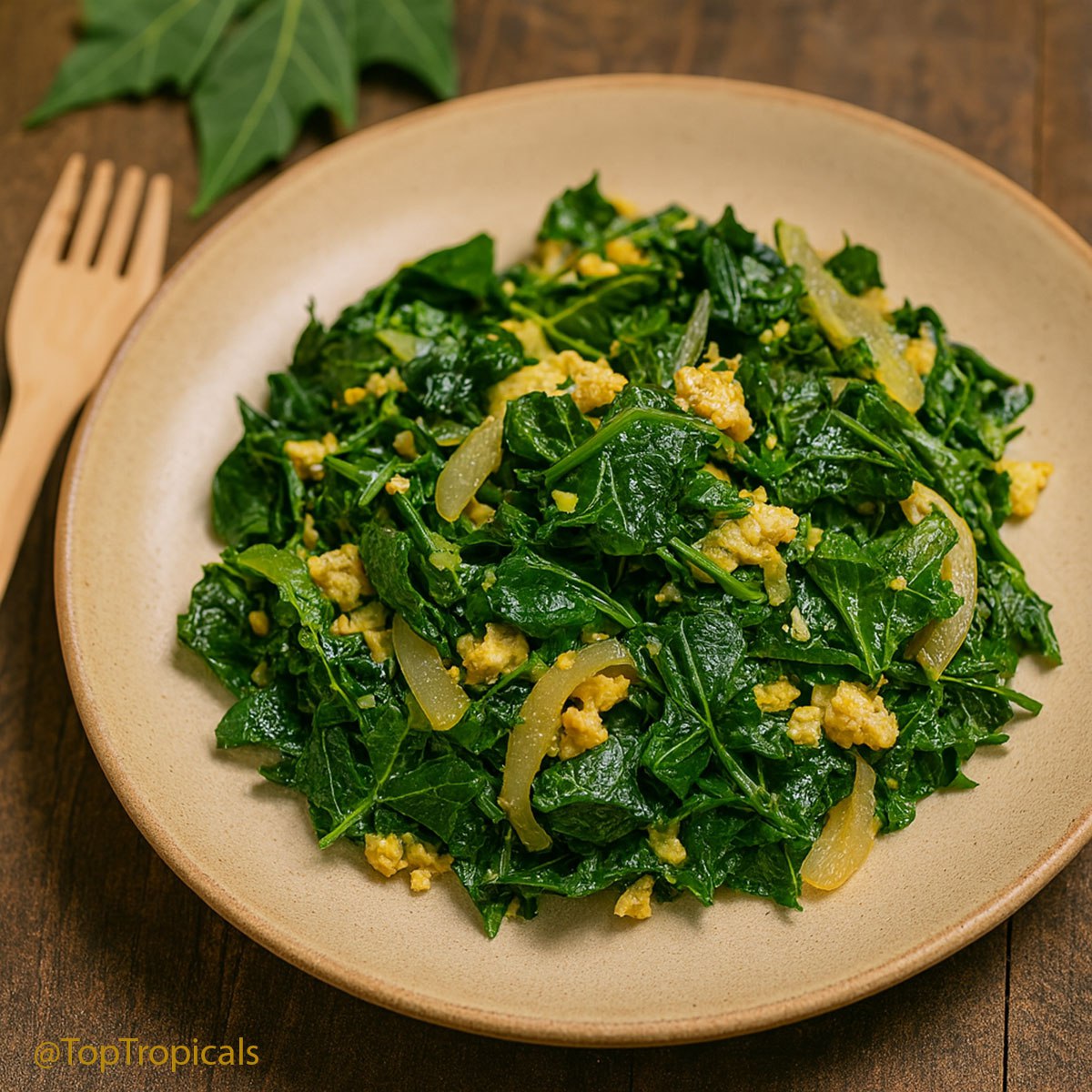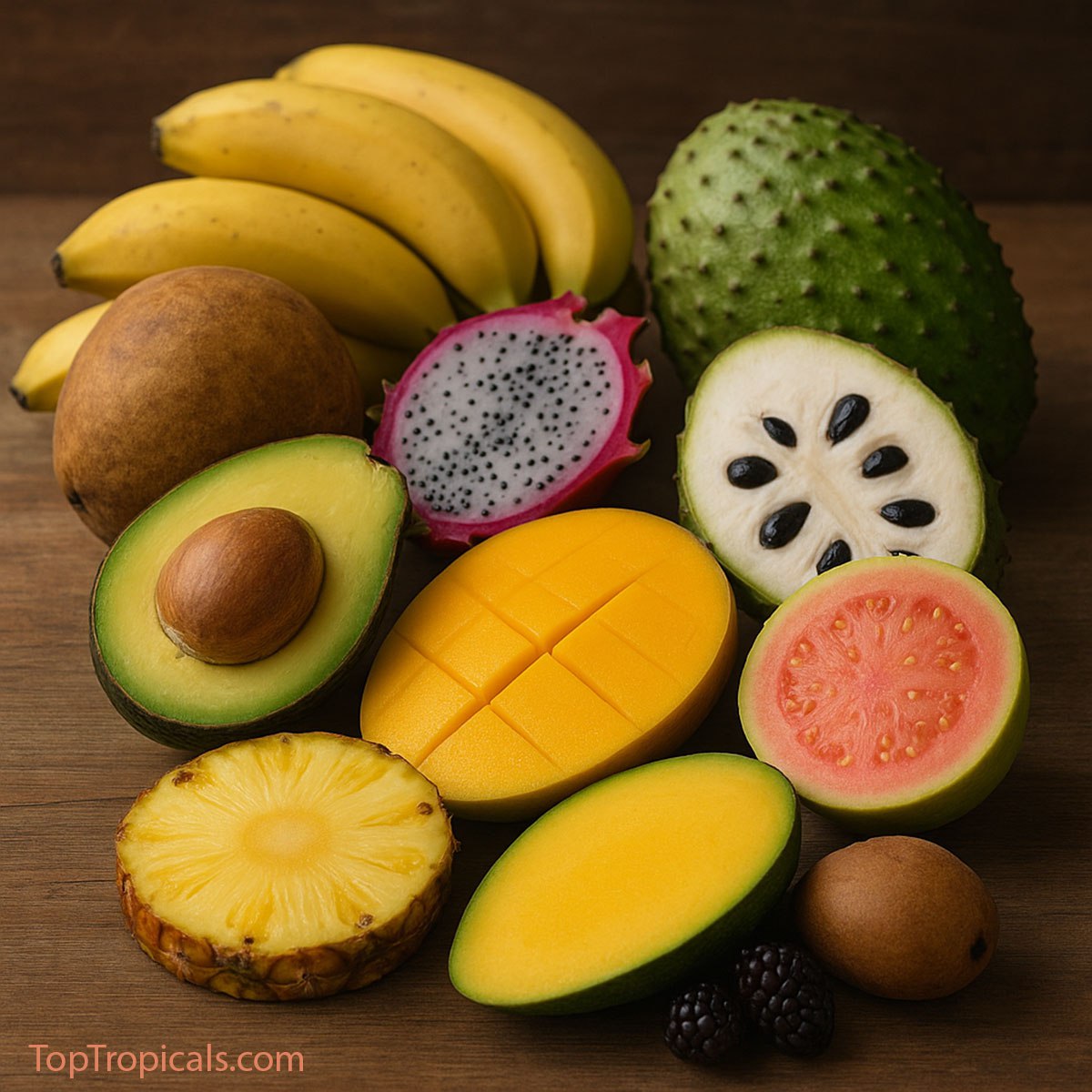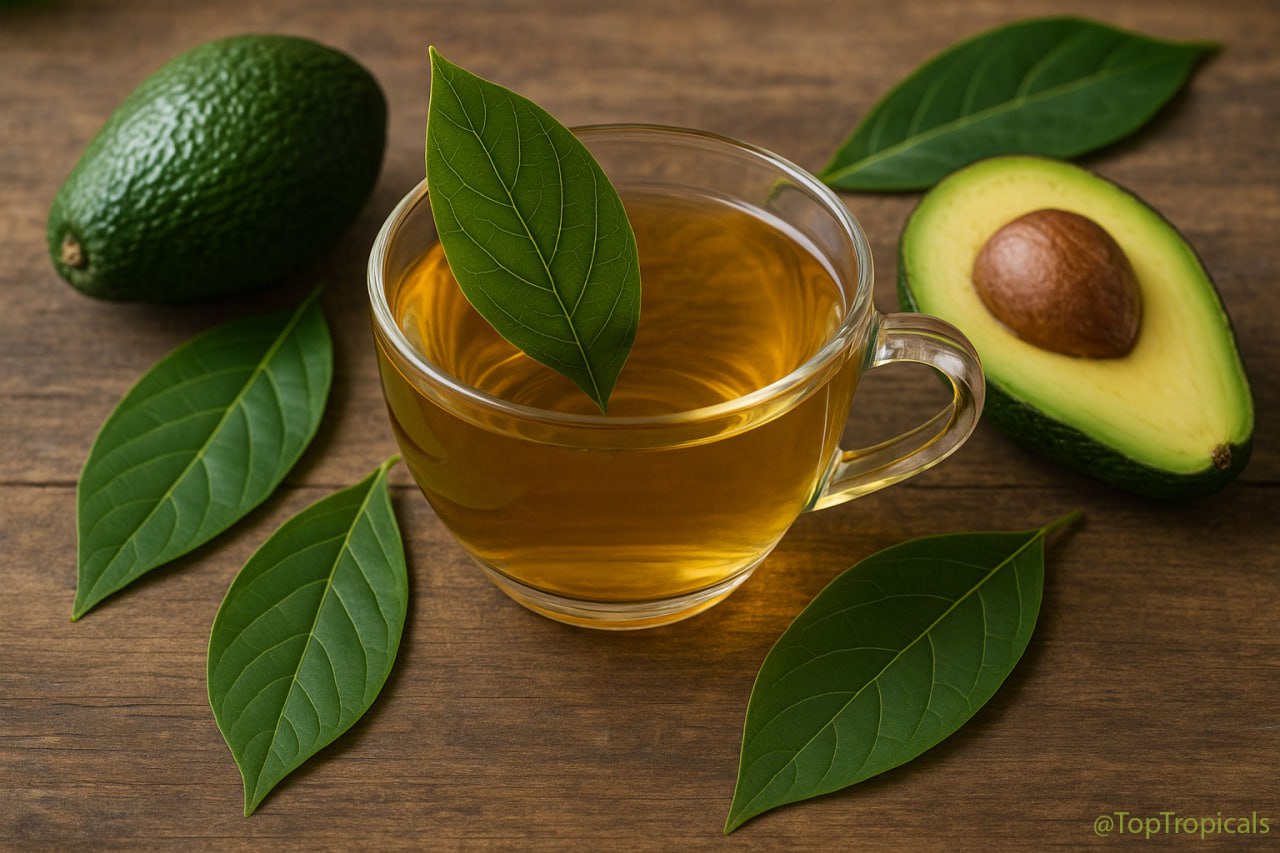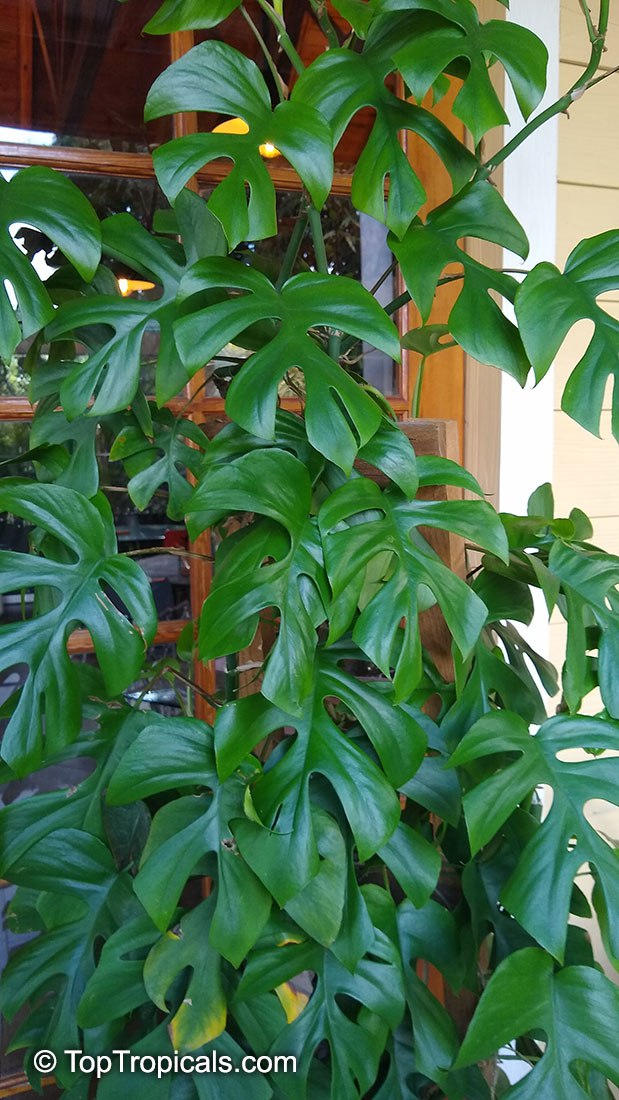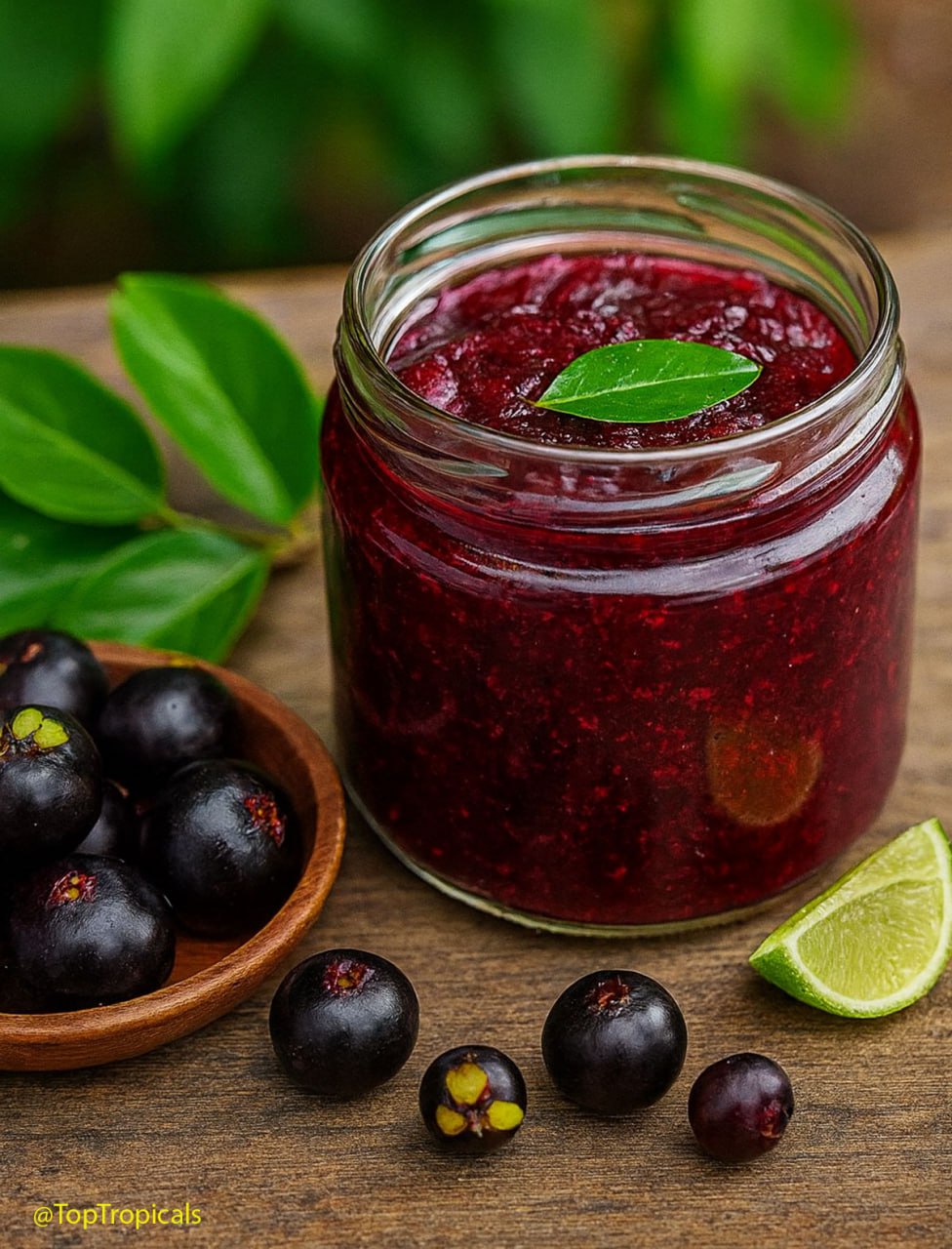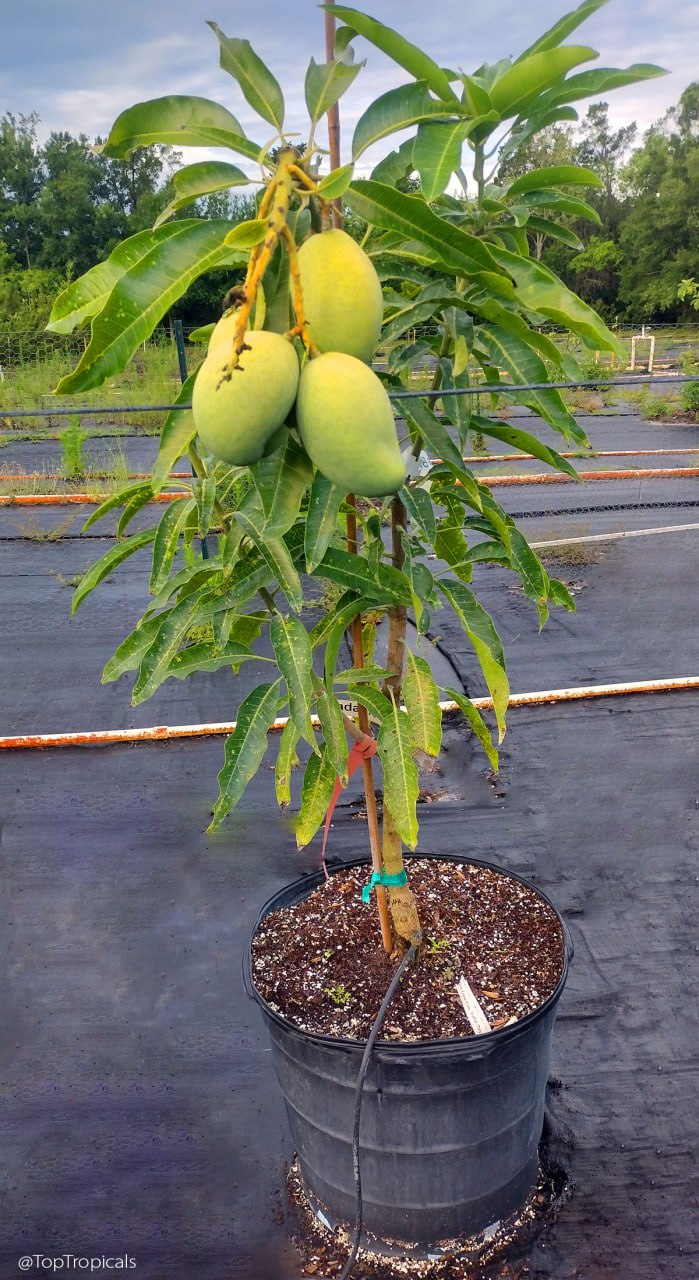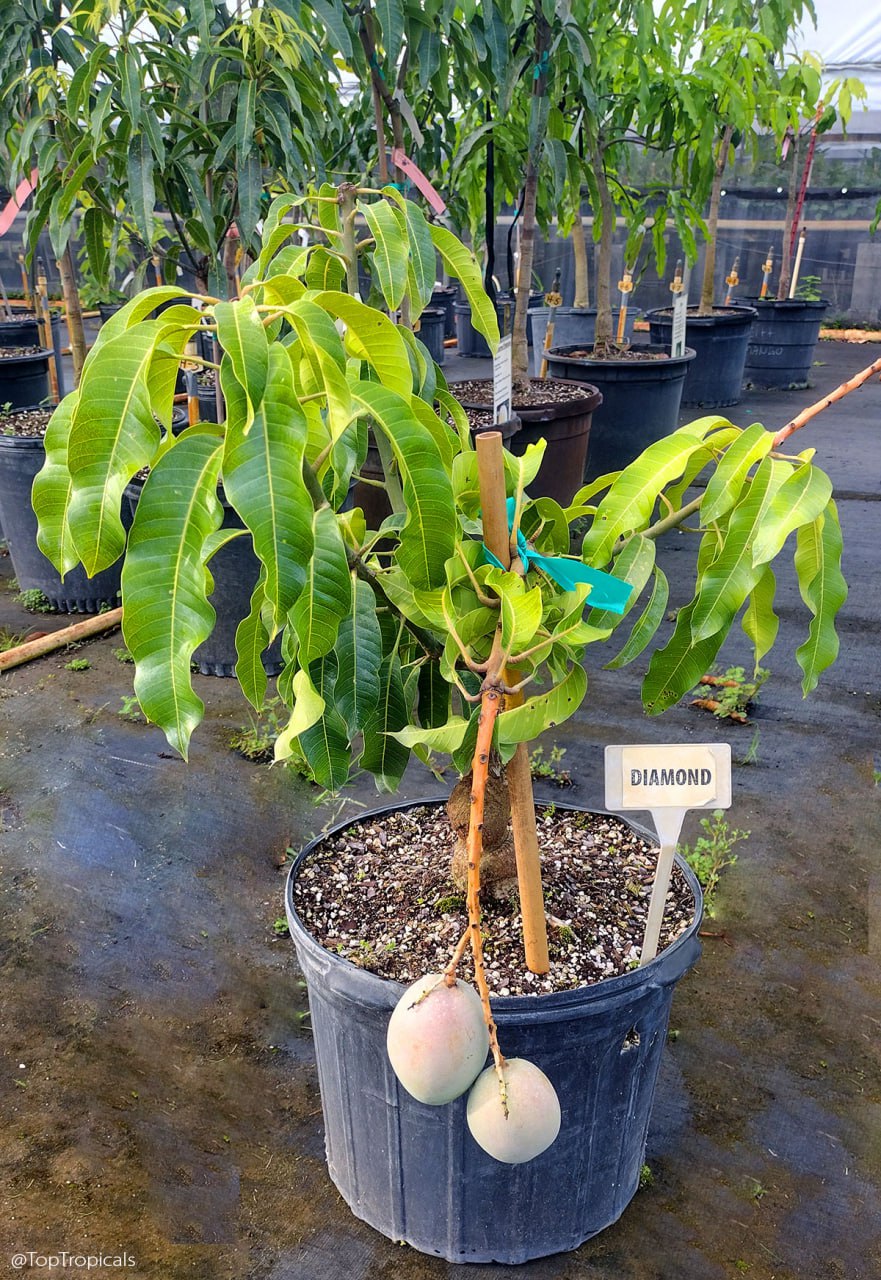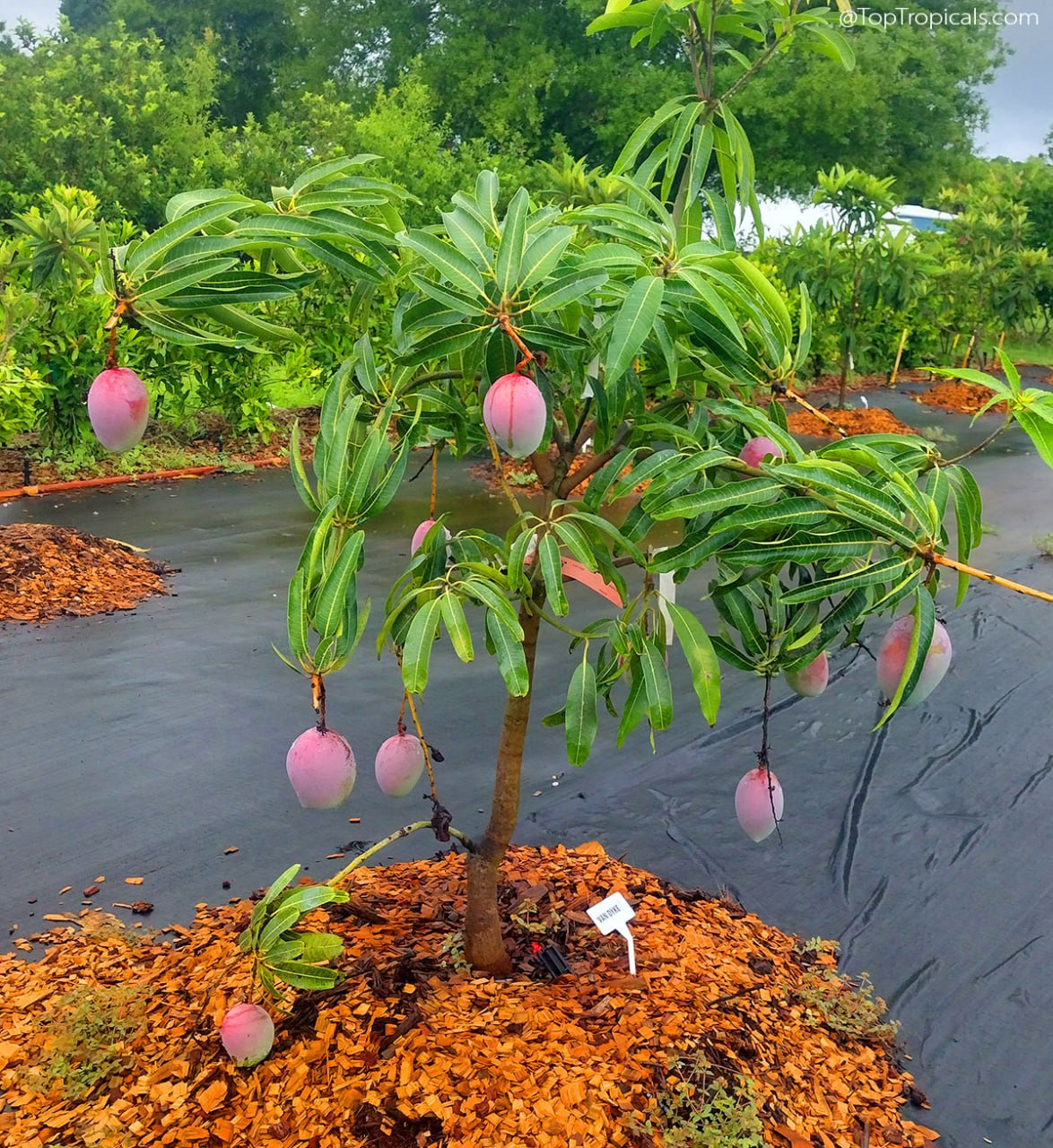Garden Blog - Top Tropicals
Guava beats banana in the potassium game
🍉 Guava beats banana in the potassium game
🛒 Your body needs potassium - your garden grows it on guava tree!
📚 Learn more:
#Food_Forest #Guava #Discover
🟢 Join 👉 TopTropicals
- 🍉Everyone talks about bananas when it comes to potassium, but guava (Tropical Guava - Psidium guajava) quietly beats them! One cup of guava packs around 688 milligrams of potassium, compared to about 450 in a banana!
- 🍉Potassium is essential for strong bones, steady blood pressure, muscle function, and a healthy nervous system. Adults need between 2,600 and 3,400 mg daily, according to the National Institute of Health - so adding guava to your fruit bowl is a smart move.
- 🍉Guavas are common across the tropics - from Mexico to the Caribbean - with green or yellow skin and beautiful pink or off-white flesh. Sweet, aromatic, and easy to grow in warm climates, guava is one tropical fruit that truly earns its place in the garden and on your plate.
🛒 Your body needs potassium - your garden grows it on guava tree!
📚 Learn more:
- ▫️Six guava varieties that will keep you picking year-round
- ▫️How to grow a Guava Tree: Practical Guide to Growing Guava
- ▫️More about #Guava
#Food_Forest #Guava #Discover
🟢 Join 👉 TopTropicals
Guava fudge: quick-n-fun exotic recipes
🔴Cook guava pulp with sugar until thick, pour into a pan, cut into squares.
🔴A tropical fudge-like sweet.
🛒 Grow your own sweet guava fruit
📚 Learn more:
#Food_Forest #Recipes
🟢 Join 👉 TopTropicals
🔴A tropical fudge-like sweet.
🍴 Guava fudge: quick-n-fun exotic recipes
Ingredients
- 2 cups ripe guava pulp
- 1½ cups sugar
- 1 tbsp lemon juice (optional)
Instructions
- Cook guava pulp with sugar in a pan over medium heat.
- Stir constantly until mixture thickens and pulls away from sides.
- Pour into a greased pan and let it cool.
- Cut into small squares and enjoy your tropical fudge.
🛒 Grow your own sweet guava fruit
📚 Learn more:
- ▫️Six guava varieties that will keep you picking year-round
- ▫️How to grow a Guava Tree: Practical Guide to Growing Guava
- ▫️More about #Guava
#Food_Forest #Recipes
🟢 Join 👉 TopTropicals
Chaya stir-fry: quick-n-fun exotic recipes
🍴 Chaya stir-fry: quick-n-fun exotic recipes
🛒 Add nutritious Chaya to your garden and kitchen
📚 Learn more:
#Food_Forest #Recipes
🟢 Join 👉 TopTropicals
- 🟢Boil chaya leaves first (to remove toxins), then stir-fry with onions and eggs.
- 🟢Nutritious and earthy with a spinach-like taste.
Chaya Stir-Fry (Maya Spinach)
Ingredients
- 2 cups Chaya leaves, boiled first to remove toxins
- 1 small onion, sliced
- 2 eggs, lightly beaten
- 1 tbsp cooking oil or butter
- Salt to taste
Instructions
- Boil Chaya leaves for 15-20 minutes before eating. This is essential to destroy natural toxins. Never eat raw Chaya leaves.
- Drain and chop the boiled leaves.
- Heat oil in a pan and saut onions until soft.
- Add the boiled Chaya leaves and stir-fry for 2-3 minutes.
- Push leaves to one side, pour in the eggs, and scramble.
- Mix everything together and season with salt. Serve warm.
🛒 Add nutritious Chaya to your garden and kitchen
📚 Learn more:
- ▫️Variegated Chaya - beauty meets nutrition
- ▫️Chaya's health benefits: a must-have tropical leafy vegetable for sustainable gardening
#Food_Forest #Recipes
🟢 Join 👉 TopTropicals
11 tropical fruits to eat instead of taking a fiber supplement
🍑 11 tropical fruits to eat instead of taking a fiber supplement
These fruits aren’t just delicious - they help you meet your daily fiber needs in ways that are far more enjoyable (and sustainable) than taking supplements. And when home gardeners, farmers, or tropical communities grow and share them, it’s a double win: nutrition and tradition hand in hand.
✔️ Tropical fiber power: tips for getting more fiber from tropical fruits
🛒 Plant a fruit tree to harvest your fruit tomorrow
📚 Learn more:
Tropical fruit health benefits guide - what fruit and edibles can help with health issues and vitamin deficiencies, Part 1 and Part 2.
#Food_Forest #Remedies #Discover #How_to
🟢 Join 👉 TopTropicals
- When we think of tropical fruit, we picture sweetness, sunshine, and exotic flavors packed with vitamin C. But beneath all that juicy goodness lies another gift: dietary fiber - quietly working to support digestion, feed the gut microbiome, and help keep blood sugar steady.
- Avocado leads the pack among tropical fruits for fiber content. One creamy, ripe fruit can provide around 10 grams of fiber, roughly a third of an adult’s daily need. And there’s more to avocado than fiber - it’s also rich in healthy fats, micronutrients, and that silky texture everyone loves.
- Other tropical fruits bring their own kind of fiber strength. Guava delivers up to 9 grams per cup, plus a burst of vitamin C.
- Mango offers about 3 grams in half a fruit, especially when eaten with some of the skin.
- Pineapple, though not always seen as a fiber powerhouse, still contributes around 2 grams per cup, along with bromelain, the enzyme that helps digestion.
- Jackfruit’s fibrous pulp makes it another standout - it’s so meaty, it’s even used as a plant-based substitute in savory dishes.
- Sapote fruit (Mamey, Canistel) and Sapodilla add fiber with a smooth, custard-like texture.
- Adventurous tropical varieties like Annona (custard apple, soursop) may not top the charts in fiber numbers, but their soft, fibrous flesh still adds value: about 1.3 grams of fiber per 100 grams of fruit.
- Bananas contain both soluble and insoluble fiber; the soluble part (mainly pectin) helps control blood sugar and appetite, while the insoluble fiber aids regularity.
- Mulberries are rich in insoluble fiber, especially in their skin, supporting digestion and promoting healthy bowel movements.
- Dragon fruit offers a mix of soluble fiber in its juicy flesh and insoluble fiber from its tiny edible seeds, which help support gut health and feed good bacteria.
These fruits aren’t just delicious - they help you meet your daily fiber needs in ways that are far more enjoyable (and sustainable) than taking supplements. And when home gardeners, farmers, or tropical communities grow and share them, it’s a double win: nutrition and tradition hand in hand.
✔️ Tropical fiber power: tips for getting more fiber from tropical fruits
- ⏺Eat whole, not juiced. Most of the fiber is in the pulp, skin, and seeds. Juicing removes much of that goodness.
- ⏺Mix it up. Tropical fruits are great, but balance them with legumes, whole grains, nuts, and veggies for a full fiber range.
- ⏺Take it slow. If your diet is low in fiber, increase gradually to avoid bloating or discomfort.
- ⏺Drink plenty of water. Fiber works best when paired with hydration.
- ⏺Mind the ripeness. Unripe fruits can have more resistant starch, another form of fiber.
- ⏺Get creative. Toss tropical fruits into smoothies, salsas, breakfast bowls, or even desserts - a tasty stealth-fiber strategy.
🛒 Plant a fruit tree to harvest your fruit tomorrow
📚 Learn more:
Tropical fruit health benefits guide - what fruit and edibles can help with health issues and vitamin deficiencies, Part 1 and Part 2.
#Food_Forest #Remedies #Discover #How_to
🟢 Join 👉 TopTropicals
Macadamia nut crusted fish: quick-n-fun exotic recipes
🍴 Macadamia nut crusted fish: quick-n-fun exotic recipes
🛒 Grow your own Macadamia Tree
📚 Learn more:
Where do Macadamia nuts come from
#Food_Forest #Recipes
🟢 Join 👉 TopTropicals
- 🟡Coat fish fillets in crushed Macadamias, pan-fry until golden.
- 🟡Crispy, buttery, and delicious.
Macadamia nut crusted fish
Ingredients
- 2 fish fillets (such as snapper or tilapia)
- 1/2 cup crushed macadamia nuts
- 1 egg, beaten
- 1 tbsp butter or oil for frying
- Salt and pepper to taste
- Lime wedges for serving
Instructions
- Pat fish fillets dry and season with salt and pepper.
- Dip each fillet in beaten egg, then coat with crushed macadamia nuts.
- Heat butter or oil in a skillet over medium heat.
- Pan-fry fillets 3-4 minutes per side until golden brown and cooked through.
- Serve with lime wedges and enjoy.
🛒 Grow your own Macadamia Tree
📚 Learn more:
Where do Macadamia nuts come from
#Food_Forest #Recipes
🟢 Join 👉 TopTropicals
Avocado leaf tea: island secret for a calm heart and blood pressure
Avocado leaf tea: island secret for a calm heart and blood pressure
🛒 Plant an Avocado tree and help your body stay healthy
📚 Learn more:
Tropical fruit and plants that help keep blood pressure in balance, Part 1, and Part 2.
#Food_Forest #Remedies #Discover #How_to
🟢 Join 👉 TopTropicals
🍃 You see that Avocado tree in your yard? Don't just love it for the fruit - the leaves carry magic too! Old folks in the tropics will tell you - never throw away the avocado leaves. They’ve been used for generations to brew a tea that helps steady the heart and ease high blood pressure.
🍃 When life gets busy and your heart starts beating too fast, this tea helps it find its rhythm again. The leaf holds flavonoids and quercetin - fancy words for what nature been doing all along: keeping the blood flowing smooth and the body at peace. Folks say it also helps with digestion and keeps the liver happy.
🍃 Avocado leaf tea
Ingredients
- 3 to 4 fresh avocado leaves
- 2 cups water
- Optional: honey, lemon, or cinnamon stick
Instructions
- Rinse the avocado leaves well.
- Place them in a small pot with 2 cups of water.
- Bring to a gentle simmer and let it cook for about 10 minutes.
- Strain the tea and add honey, lemon, or cinnamon if desired.
- Sip slowly and enjoy the calm, earthy flavor.
- 🍃 They say it helps the belly, calms the mind, and keeps the liver strong. Maybe that’s science, maybe it’s just island truth - but it surely does the body good! Some call it bush medicine, others just call it good sense. Either way, it’s a simple garden remedy that’s been soothing hearts long before pills and prescriptions came around.
🛒 Plant an Avocado tree and help your body stay healthy
📚 Learn more:
Tropical fruit and plants that help keep blood pressure in balance, Part 1, and Part 2.
#Food_Forest #Remedies #Discover #How_to
🟢 Join 👉 TopTropicals
Stop watering your Monstera on a schedule - here is what it really wants!
💦Stop watering your Monstera on a schedule - here is what it really wants!
📸 In the photo: Rhaphidophora tetrasperma - Mini Monstera, Dwarf Monstera Ginny, a rare collectible for plant enthusiasts.
🛒 Shop Monstera plants
📚 Learn more:
#Food_Forest #Container_Garden #Shade_Garden #How_to
🟢 Join 👉 TopTropicals
☘️ Monstera might look like a big diva, but it's actually one of the easiest houseplants to keep happy, according to the gardening experts from Southern Living.
☘️ The trick is not sticking to a strict watering schedule, but checking the soil. Water only when the top couple inches feel dry - usually every week or two in warm months and less in winter. Give it a good soak until water drains out the bottom, then let it dry again.
☘️ Too much water is worse than too little – soggy soil means root rot. Signs of overwatering include yellow or droopy leaves, dark spots, or gnats buzzing around. Underwatering looks similar, but the soil will be bone dry. When in doubt, check the dirt!
☘️ You can water from the top or let the pot sit in a shallow tray to soak from the bottom – just don’t let it sit in water. Bright, indirect light and a well-draining pot are your best friends. Keep that balance, and your Monstera will thrive for decades.
📸 In the photo: Rhaphidophora tetrasperma - Mini Monstera, Dwarf Monstera Ginny, a rare collectible for plant enthusiasts.
🛒 Shop Monstera plants
📚 Learn more:
- • Fruit growing on a house plant!
- • How to harvest and eat Monstera Ice Cream
- • How mini is Mini Monstera?
- • Holy Swiss Cheese Plant
- • Monstera x adansonii - Baby Swiss Cheese Plant
#Food_Forest #Container_Garden #Shade_Garden #How_to
🟢 Join 👉 TopTropicals
Grumichama jam: quick-n-fun exotic recipes
🍴 Grumichama jam: quick-n-fun exotic recipes
🛒 Plant Grumichama tree (Eugenia brasiliensis)
📚 Learn more:
#Food_Forest #Recipes
🟢 Join 👉 TopTropicals
🔴Cook Grumichama cherries with sugar and lime juice.- 🔴A deep red jam with a cherry-meets-blackberry flavor.
Grumichama Jam: Quick-n-Fun Exotic Recipes
Ingredients
- 2 cups fresh Grumichama cherries (Eugenia brasiliensis)
- 1 cup sugar
- 1 tbsp lime juice
Instructions
- Remove seeds from Grumichama cherries.
- Place fruit in a saucepan with sugar and lime juice.
- Simmer over low heat until thick and glossy, stirring often.
- Pour into sterilized jars and let cool before sealing.
🛒 Plant Grumichama tree (Eugenia brasiliensis)
📚 Learn more:
- ▫️The best tasting and most beautiful tropical cherry
- ▫️Why grow Grumichama? Benefits of Brazilian Eugenia Tree - Cherry of the Tropics
#Food_Forest #Recipes
🟢 Join 👉 TopTropicals
Yes, you can grow a tropical fruit tree in a pot!
Yes, you can grow a tropical fruit tree in a pot!
If you live where winters get chilly, move the pot indoors or into a greenhouse before frost. Prune lightly in spring to keep shape and airflow. Container trees can fruit heavily if given light, warmth, and consistent care.
At the end of the day, container culture lets you grow the tropics anywhere - from a city balcony to a backyard deck.
➡ Next: The best tropical fruit trees for containers...
📸 Growing and fruiting Soursop in apartment (PDF download)
🛒 Explore tropical fruit trees
#Food_Forest #How_to #Discover
🟢 Join 👉 TopTropicals
🍒 If you dream of picking fresh tropical fruit - Mango, Avocado, exotiс Annona and more - but only have a patio, balcony, or small yard, you’re not out of luck. Many tropical fruit trees grow perfectly well in large containers. The key is choosing the right variety, pot, and care routine.
🍒 Pick a compact tree type
🍒 Choose the right pot
🍒 Soil and watering
🍒 Light and feeding
🍒 Cold protection and pruning
Start with a dwarf or semi-dwarf variety. Regular tropical trees can grow huge, but container-sized cultivars stay under 8–10 feet and are much easier to manage. For example, Condo varieties of Mango like Pickering or Ice Cream stay small and still produce full-sized fruit. The same goes for Dwarf Avocados like Wurtz (also called Little Cado) and Sugar apples. Blackberry Jam fruit tree (Randia formosa) and Peanut Butter Fruit tree (Bunchosia argentea) are also excellent choices.
Begin with a 5-gallon container and move up as the tree grows. A mature plant will be happy in a 20–25-gallon pot. Drainage is critical - roots will rot if the pot stays soggy. Use a sturdy plastic, ceramic, or wooden container with multiple holes in the bottom.
These trees all like loose, well-draining soil. Mix potting soil with perlite or pine bark for better aeration. Water deeply but not too often - let the top few inches dry before watering again. Overwatering is the quickest way to kill a potted tropical.
Full sun is a must - aim for at least 6 hours daily. Fertilize during the growing season with a balanced fruit tree or slow-release fertilizer like Green Magic or liquid Sunshine Boosters. Many tropicals appreciate an extra boost of micronutrients like iron and magnesium to keep their leaves green.
If you live where winters get chilly, move the pot indoors or into a greenhouse before frost. Prune lightly in spring to keep shape and airflow. Container trees can fruit heavily if given light, warmth, and consistent care.
At the end of the day, container culture lets you grow the tropics anywhere - from a city balcony to a backyard deck.
➡ Next: The best tropical fruit trees for containers...
📸 Growing and fruiting Soursop in apartment (PDF download)
🛒 Explore tropical fruit trees
#Food_Forest #How_to #Discover
🟢 Join 👉 TopTropicals
How long does it take for a mango tree to bear fruit?
How long does it take for a mango tree to bear fruit?
📸 In the photos: the trees in 7 gal pots are 2 years from grafting, and the trees in the ground are 1 year from the time of planting and 3 years from grafting.
🛒 Shop Mango varieties
📚 Learn more about #Mango and different varieties: #Mango_Rainbow
#Food_Forest #Mango
🟢 Join 👉 TopTropicals
A Mango tree (Mangifera indica) grown from seed can take anywhere from 7 to 10 years to start fruiting, depending on conditions. Doesn’t sound too exciting, ah? Besides such a long wait, you never know how good the fruit will be – most likely it'll taste fibrous and not very sweet. Unless your cross-pollination was perfectly set between some top-notch parent cultivars, it's a gamble. Seedling results are always hit or miss.
That's why you need a grafted tree – it fruits soon (in the ground or in a large container) and guarantees the quality of the fruit. There are hundreds of cultivated varieties to choose from: juicy, sweet, and flavorful. Some taste like pina colada, pineapple, or lemon meringue pie, others like peach sherbet or even guava! The mango flavor spectrum is broader than that of apples!
So, you’ve got yourself a nice mango tree in a container and can’t wait for your first harvest. How soon?
By the second year, you can let your tree keep a bit more fruit. Young trees usually know their limits and will naturally drop any extra fruit they can’t support. Within 2–3 years, you’ll be harvesting good crops – enough to enjoy yourself and share with friends!
Remember, a strong, healthy tree produces sooner and more. Feed it with Sunshine Mango Tango liquid booster or Green Magic controlled-release fertilizer, and protect it from frost, especially while young. Once established, your mango will reward you with reliable, abundant harvests year after year.
Mango trees start flowering from early winter (early cultivars like Nam Doc Mai) to early spring (late cultivars like Keitt). One little tree can produce hundreds, even thousands of tiny flowers, but not all will set fruit. The younger the tree, the fewer fruits it can hold. Expect just a few the first year. Even if your mango sets a lot, don’t keep them all - let the young tree focus on establishing roots and strong growth. Leave 1-2 fruits and remove the rest. Your tree will thank you and grow fast and sturdy.
📸 In the photos: the trees in 7 gal pots are 2 years from grafting, and the trees in the ground are 1 year from the time of planting and 3 years from grafting.
🛒 Shop Mango varieties
📚 Learn more about #Mango and different varieties: #Mango_Rainbow
#Food_Forest #Mango
🟢 Join 👉 TopTropicals

